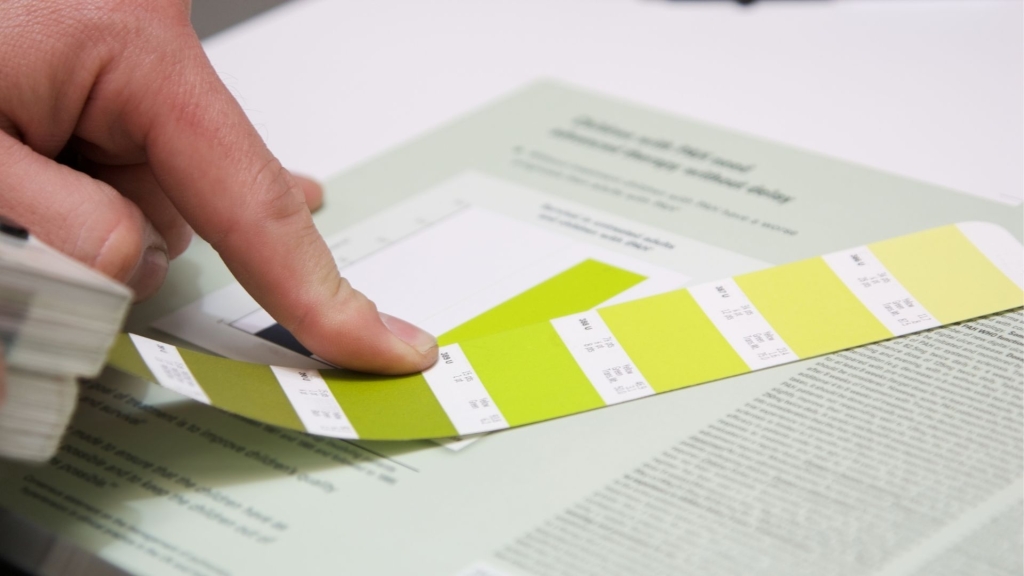How do you achieve a colour match to bespoke colours?

In our industry, inconsistent colour matching can often be a problem. That’s why at Redwood we use Delta E technology to reliably colour match to within 0.4 dE to prevent disappointment. Here’s how…
Using industry-standard colour matching: CIELAB
CIELAB, one of the most commonly used industry standards for an accurate colour match, stands for ‘Commission Internationale de l’Eclairage Lab’ and was developed by the International Commission on Illumination (CIE) to define a uniform colour space.
CIELAB is mathematically defined and much more precise than other RGB or CMYK colour standards. The CIELAB colour space consists of three components: L*, a*, and b*:
L*: Represents the lightness of a colour. The range typically goes from 0 perfect black, to 100 white. A higher L* value indicates a lighter colour, while a lower value indicates a darker colour.
a*: Represents the red-greenness of the colour. Positive values of a* indicates redness, while negative values indicate greenness. A level of 0 is neutral.
b*: Represents the yellow-blueness of the colour. Positive values indicate yellowness, while negative values indicate blueness.
Using Delta E for professional colour matching
Delta E (or ∆E) is a standard professional measurement, created by the Commission Internationale de l’Eclairage (International Commission on Illumination) used to assess colour accuracy from one colour sample to another, using the CIELAB colour space.
Delta E levels look at the difference between the displayed colour and the original colour standard of the input content, to determine the accuracy of the colour match.
The Delta E scale ranges from 0 to 100. Using CIELAB the higher the Delta E, the further away it is from its true hue, with high Delta E levels indicating a significant mismatch and 100 meaning the colours are the exact opposite.
Lower Delta E figures indicate greater accuracy, a minimal difference is considered to be between 1-2.5 and a Delta E between 3 and 6 is usually considered an acceptable number in commercial reproduction. But at Redwood, all of our matches are within 0.4 dE – this difference is so miniscule it is undetectable by the human eye!
Why is Delta E important?
Professionals, such as ourselves, place great importance on Delta E to achieve accurate colour matching results. Without Delta E, colour matching can be highly subjective, as the human eye can perceive colours differently, especially under different lighting and conditions. Human vision is also more sensitive if two colours actually touch each other, which can affect the individual’s perception of the colour.
Delta E is incredibly important for professionals looking to reproduce high quality colours, accurately and consistently for their customers.
Precise colour matching
At Redwood, our highly trained staff use Delta E technology to accurately match paint colours, in addition to their experienced eye.
We use an advanced Datacolour AFX software which compares colour samples to determine the Delta E difference of the two colours. This optimises our colour quality control, so we can confidently achieve colour consistency, quickly and effectively.
Our professional team is able to match bespoke colours for anything outside the standard ranges, either from colour charts like Paint and Paper, or even an actual door sample or wet paint sample, to ensure the best colour match for your project.
For an accurate colour match, speak to our expert team on 023 9223 3310 or email sales@redwood-uk.com
